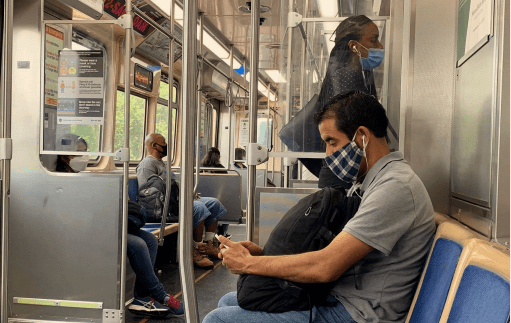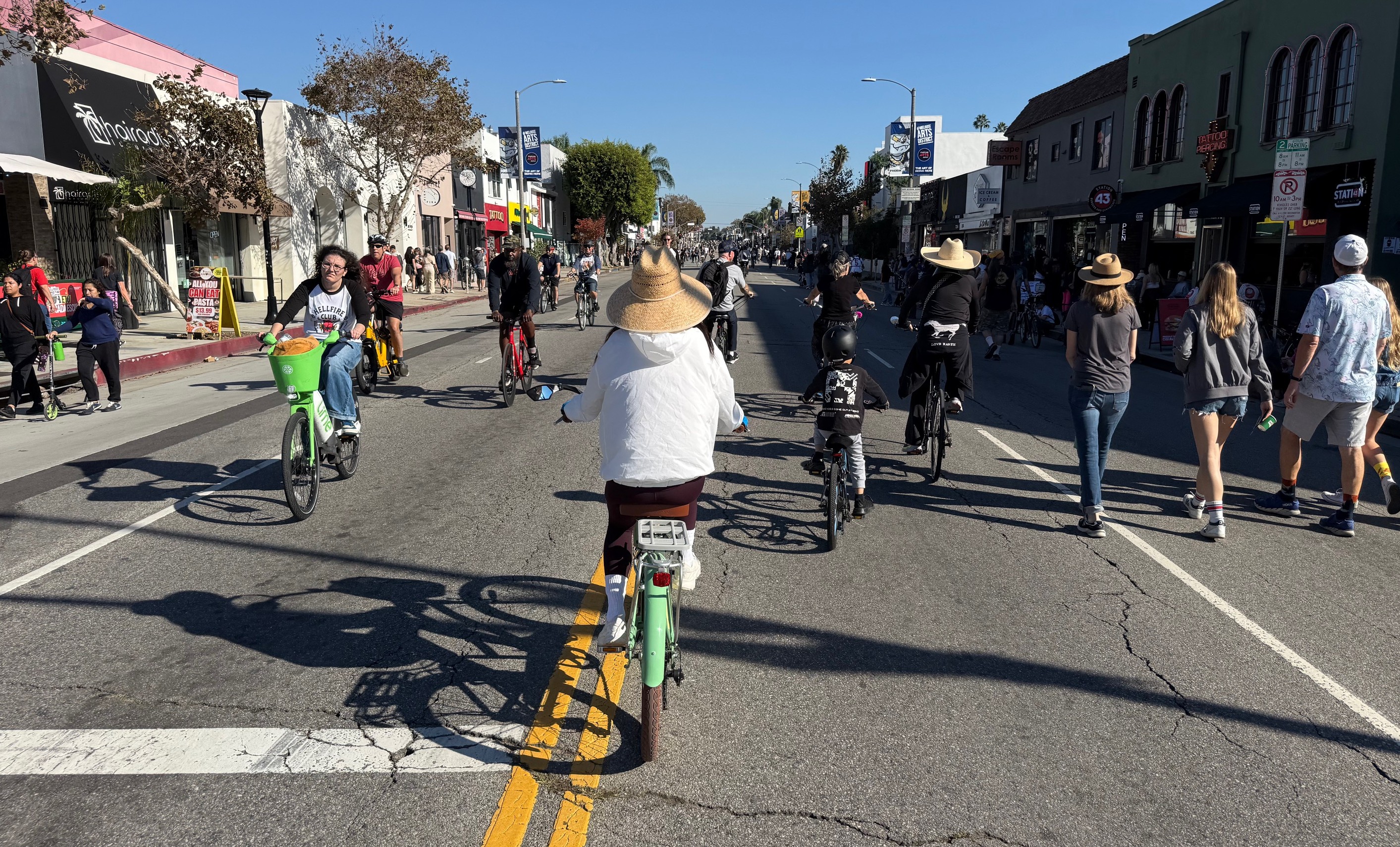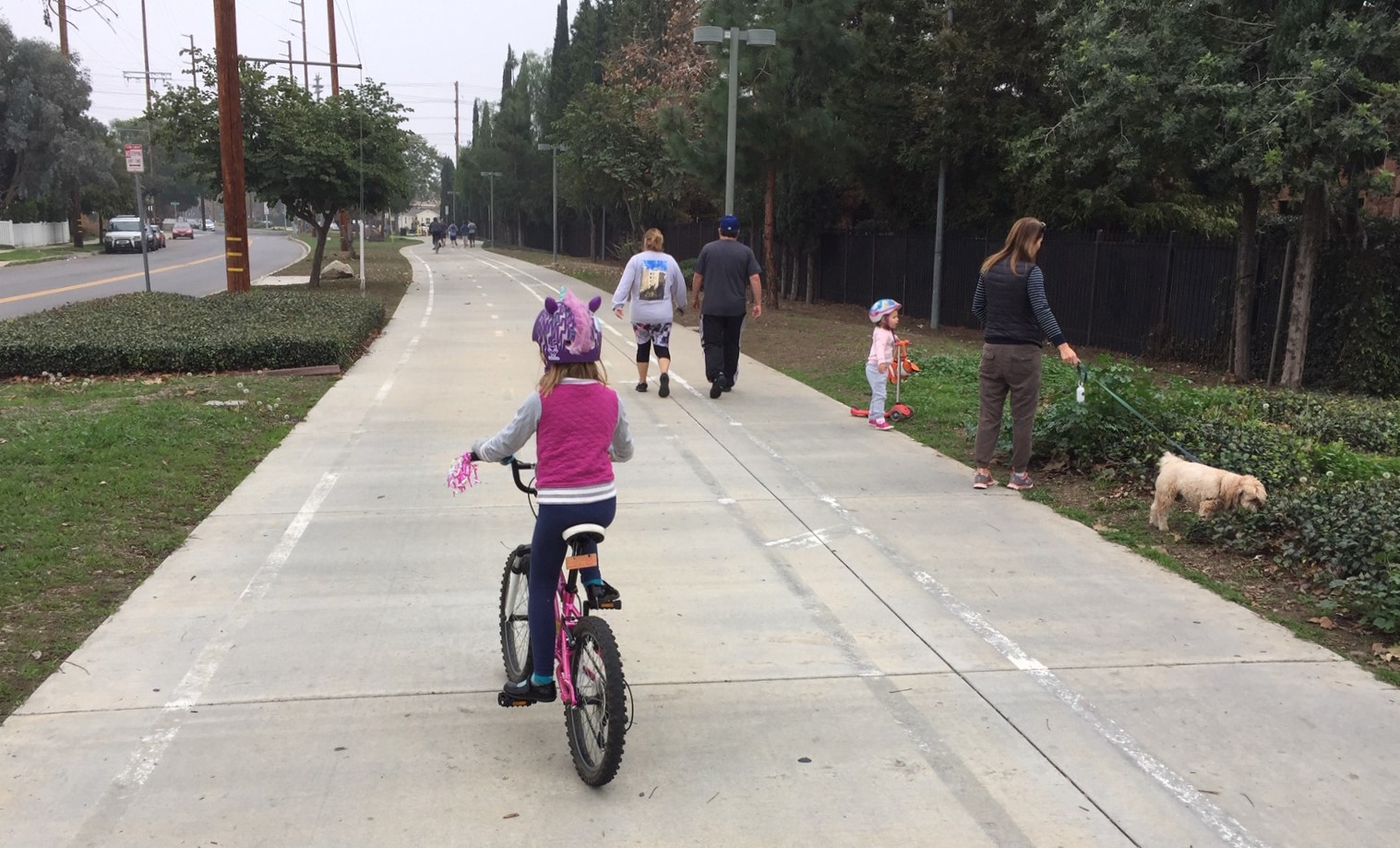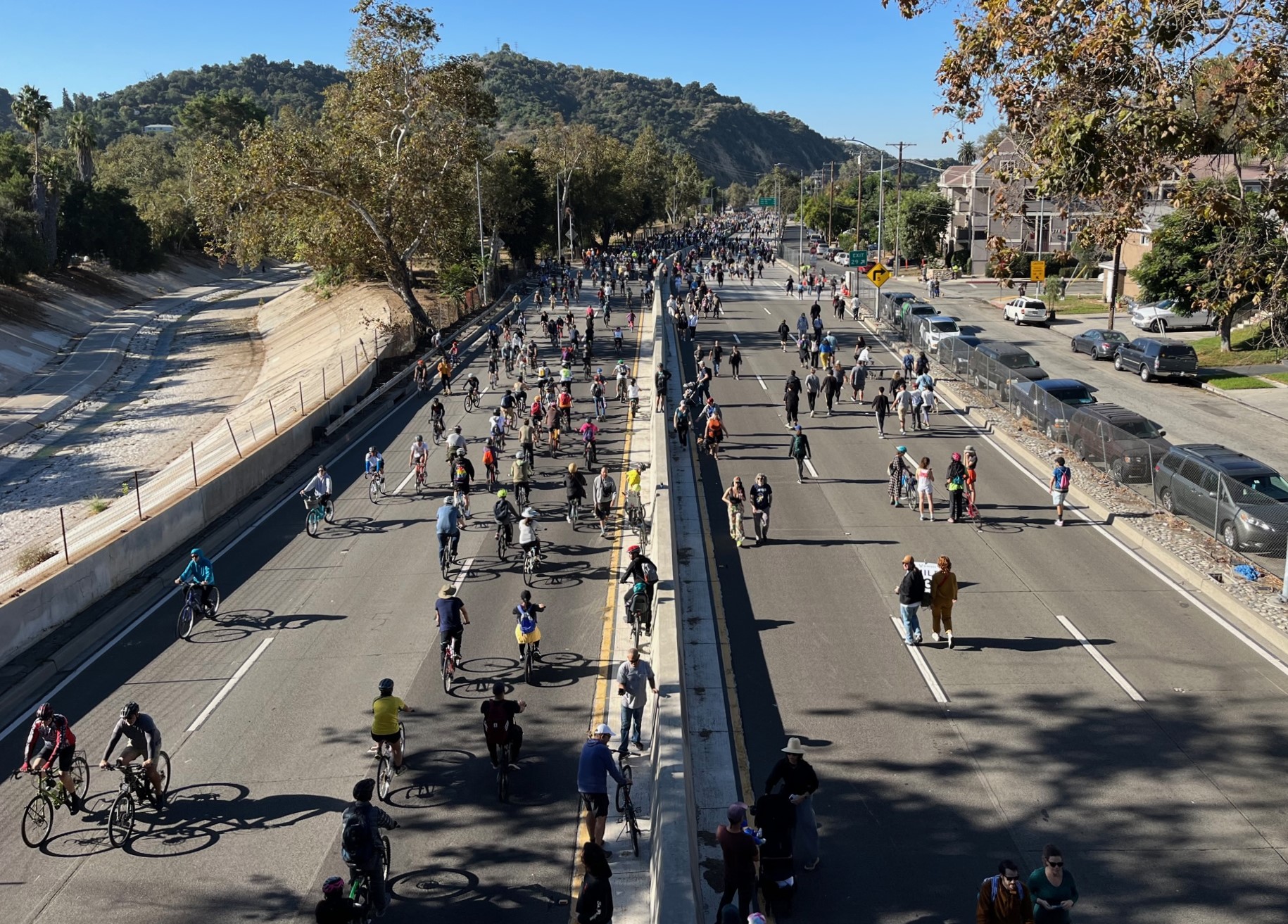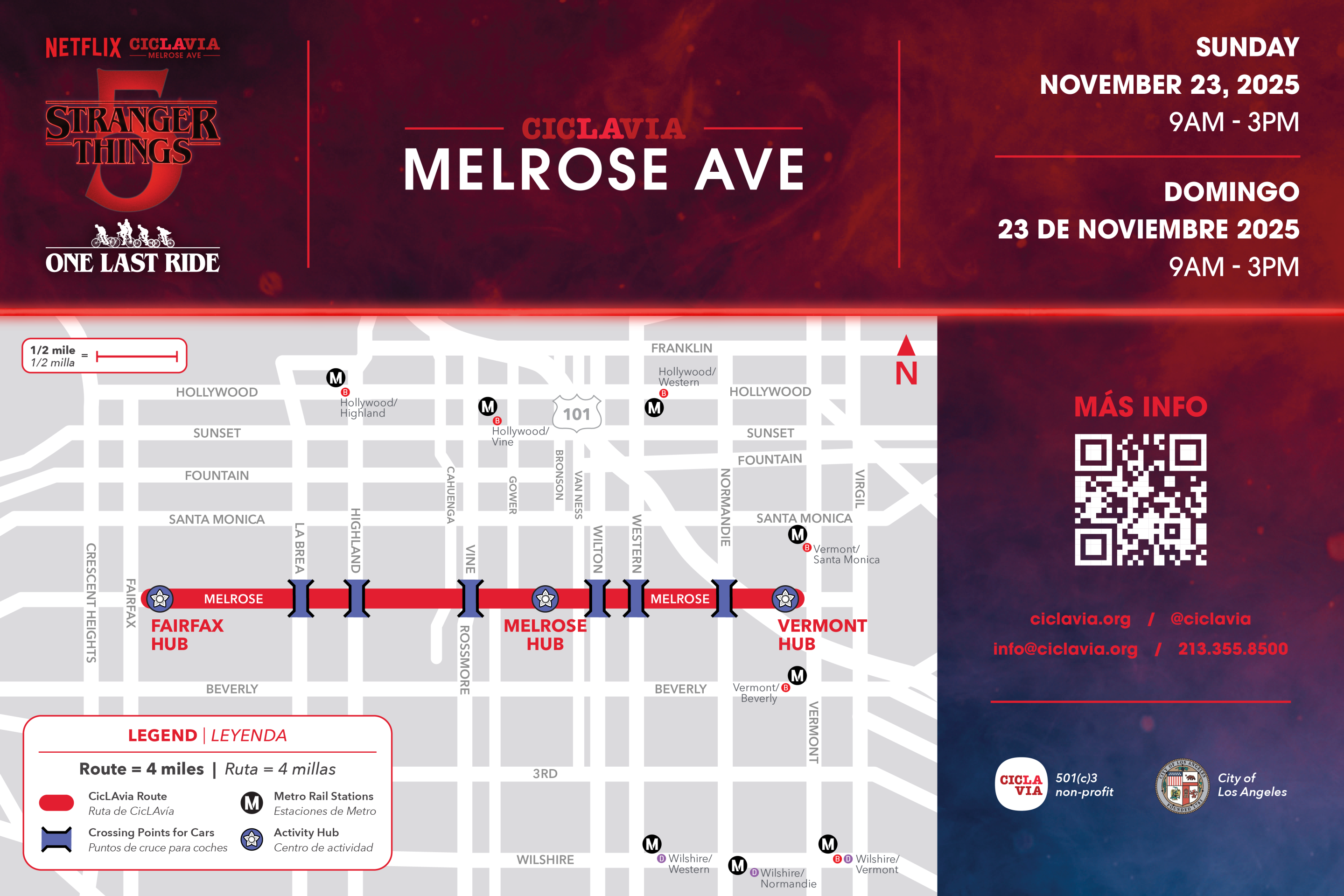Riders haven’t so much abandoned public transit during the coronavirus pandemic as curtailed the number of rides they are taking, according to a new report — a finding with major ramifications for cities and for the Black and brown communities that rely heavily on transit and have borne the brunt of COVID-19 both as patients and as essential workers.
The non-profit TransitCenter surveyed 2,198 adults in seven cities with major transit systems about their attitudes toward daily travel in order to develop recommendations for transportation planners in the report, "A Transit Agenda for the COVID-19 Emergency." Even as transit use overall fell 75 percent during the second quarter of this year — the pandemic’s worst months so far — the share of people who say they ride transit at least a few times per week fell much less, 36 percent. That means that many people are still taking transit; they’re just making fewer trips — perhaps several times a week, instead of several times a day. Moreover, the workers who took transit before the pandemic remain its most faithful riders.
“Black and brown people are more likely to work essential jobs, and routes that serve predominantly Black and brown neighborhoods have consistently retained a disproportionately high level of ridership during the pandemic,” said TransitCenter spokesman Ben Fried. “Transit agencies have to redistribute service in response to these travel patterns to prevent crowding and maximize safety for people who rely on transit throughout the pandemic. The MBTA in Boston and Muni in San Francisco have shown how it’s done.”
The online YouGov survey, conducted in July, polled residents of Los Angeles, New York City, Chicago, San Francisco, Philadelphia, Boston, and Washington, D.C. YouGov augmented its findings with four remote focus groups asking riders about their attitudes toward mask wearing and social distancing and their feelings about the safety of transit systems during the pandemic. The takeaway about sanitation and confidence in the systems? Provide clear guidance (unlike federal agencies) and protective equipment, especially masks. The survey and focus groups provided ballast for a series of recommendations addressing the functioning of the systems as well as larger transportation policy — and are especially timely as the virus surges yet again:
Keep fares free or low: “During periods of elevated risk, agencies have suspended fare collection on buses, shifting boarding to the rear door. This eliminates potential contact during fare transactions and generates space — often demarcated with a partition — between the bus operator and the passenger area. Agencies should only resume bus fare collection when case rates are low enough that the virus can be contained and suppressed with test-and-trace methods," they report says. "Given the economic stress many transit riders are enduring throughout the COVID-19 emergency, agencies should consider extending fare-free policies or offering additional discounts for riders with low incomes.”
Change the schedules: Because essential workers who rely on transit are also more likely to commute outside the traditional nine-to-five workday, “agencies should adjust schedules by reallocating service from low-ridership to high-ridership routes, especially in light of the need to reduce transit crowding for Black and brown riders with health conditions that elevate the risk of severe illness or death from COVID-19.”
Make the streets more hospitable for buses: “Car traffic is rising faster than transit ridership as cities reopen. At the same time, bus service has retained a greater share of ridership than other modes of transit, perhaps reflecting that essential workers are more likely to travel by bus. Without countermeasures in place, traffic congestion threatens to overwhelm bus service, making trips even slower and less reliable than before the onset of COVID-19.”
Re-organize bus routes to reflect changed ridership patterns: “In most cities, bus networks were already outdated before the pandemic….The virus will likely cause further long-term changes to urban travel demand. When the dust settles after the pandemic, agencies should waste no time reevaluating their bus networks. Updating service patterns to align with the new travel landscape will help riders reach jobs, schools, stores, and other daily destinations in less time.”
Provide incentives by working with employers to influence travel times: “Transit fare policy can help manage demand, for instance, through discounts for evening and weekend trips that encourage people to travel at hours when vehicles typically have more room to spread out than conventional rush hour….With COVID-19 projected to tilt travel decisions toward driving private cars, pricing and other financial incentives are a powerful countervailing tool municipalities can use to reduce automobile traffic and help keep bus riders moving.”
“Transit agency chiefs and city leaders can’t be passive in the face of this crisis,” Fried said. “They have to act urgently and decisively to make transit service safe, fast, and reliable. The health and wellbeing of transit riders depends on achieving high rates of mask wearing, adjusting service to align with changing travel patterns, and giving transit an unobstructed path on city streets.
“The stakes are high,” Fried continued. “ If policy makers don’t adapt to this emergency, the crisis for transit will deepen, riders will be saddled with worse service, and the recovery for cities will be much tougher. At the same time, there’s cause for optimism in the results of our survey and focus groups: People don’t appear to be abandoning transit so much as waiting to feel safe on transit again. The decisions that elected officials and transit leaders make right now can give people greater confidence in transit and put our cities on stronger footing during the recovery.”
TransitCenter will hold a web event on its report next Thursday, Oct. 22, 1 p.m. EST. To register, click here.
